Like an amnesic, Creationism's putative intelligent [sic] designer often forgets what it designed earlier and starts again. It did it with all the different forms of wing for flying organisms, for example, and with the seahorse and pipefish family, which it bizarrely designed so the male would be the pregnant one of the sexes, it designed a different mechanism for giving birth, even though it had designed a perfectly good mechanism for other viviparous fish and the one it would design later for mammals.
The male seahorse has a pouch at the front base of its tail which acts as a uterus, which, like in mammals, even contains a placenta to nourish the growing babies, so we would expect the same designer who designed both this and the mammalian uterus to use the same method for expelling the baby when it was time for birth, but not a bit of it!
Instead of smooth muscle contacting under the influence of oxytocin without conscious effort, as with the mammalian uterus, the male seahorse uses his skeletal tail muscles under conscious control, even though a 1970 study had shown that the fish equivalent of oxytocin, isotocin, induces labour-like behaviour in male seahorses. Apparently, the designer hadn't realised he could have made the pouch out of smooth muscle and achieved the same result. The designer only seems to have realised that millions of years later when designing mammals - something any omniscient designer would know he was going to do, and according to creationists, did on the same day!
How the male seahorse gives birth was the subject of a recent paper in the Science Direct journal, Placenta, by Jessica Suzanne Dudley, a postdoctoral fellow in Evolutionary Biology, Macquarie University, and Camilla Whittington, Senior Lecturer, Evolutionary Biology, University of Sydney, along with colleagues from the University of Sydney, the University of Newcastle, Callaghan, NSW and the Hunter Medical Research Institute, New Lambton Heights, NSW.
The following article by Jessica Suzanne Dudley and Camilla Whittington in The Conversation, reprinted under a Creative Commons license, reformatted for stylistic consistency, explains how they discovered this embarrassing fact for intelligent [sic] design advocates. The original article can be read here.

Seahorse fathers give birth in a unique way, new research shows
Jessica Suzanne Dudley, Macquarie University and Camilla Whittington, University of Sydney
In seahorses and pipefish, it is the male that gets pregnant and gives birth. Seahorse fathers incubate their developing embryos in a pouch located on their tail.
The pouch is the equivalent of the uterus of female mammals. It contains a placenta, supporting the growth and development of baby seahorses.
Read more:
The secret sex life and pregnancy of a seahorse dad
Seahorse dads provide nutrients and oxygen to their babies during pregnancy, using some of the same genetic instructions as mammalian pregnancy.
However, when it comes to giving birth, our research shows male seahorses seem to rely on elaborate behaviours and their unique body structure to facilitate labour.
How animals give birth
Labour is a complex biological process that in female pregnant animals is controlled by hormones including oxytocin. In mammals and reptiles, oxytocin induces contractions in the smooth muscles of the uterus.
There are three main types of muscle: smooth muscle, skeletal muscle and cardiac muscle.
Smooth muscle is found in the walls of most internal organs and blood vessels. This muscle type is not under conscious control. For example, your intestines are lined with smooth muscle, which rhythmically contracts to move food through your gut without you having to consciously control it.

A male seahorse with his pouch filled with water in a mating display.
Credit: Kymberlie R McGuire, CC BY
Cardiac muscle is specific to the heart and is also under involuntary control.
In female mammals the uterine wall contains abundant smooth muscle. Oxytocin stimulates this smooth muscle to contract, helping bring about labour.
These uterine contractions are spontaneous and involuntary. We can measure these uterine contractions in response to oxytocin, and the results are consistent in both mammals and reptiles.
How do male seahorses give birth?
Our team of researchers from the University of Sydney and the University of Newcastle set out to determine how labour works in male seahorses.
Our genetic data suggested seahorse labour might involve a similar process to labour in female mammals. A study in 1970 also showed that when non-pregnant male seahorses were exposed to the fish version of oxytocin (called isotocin), they expressed labour-like behaviours.
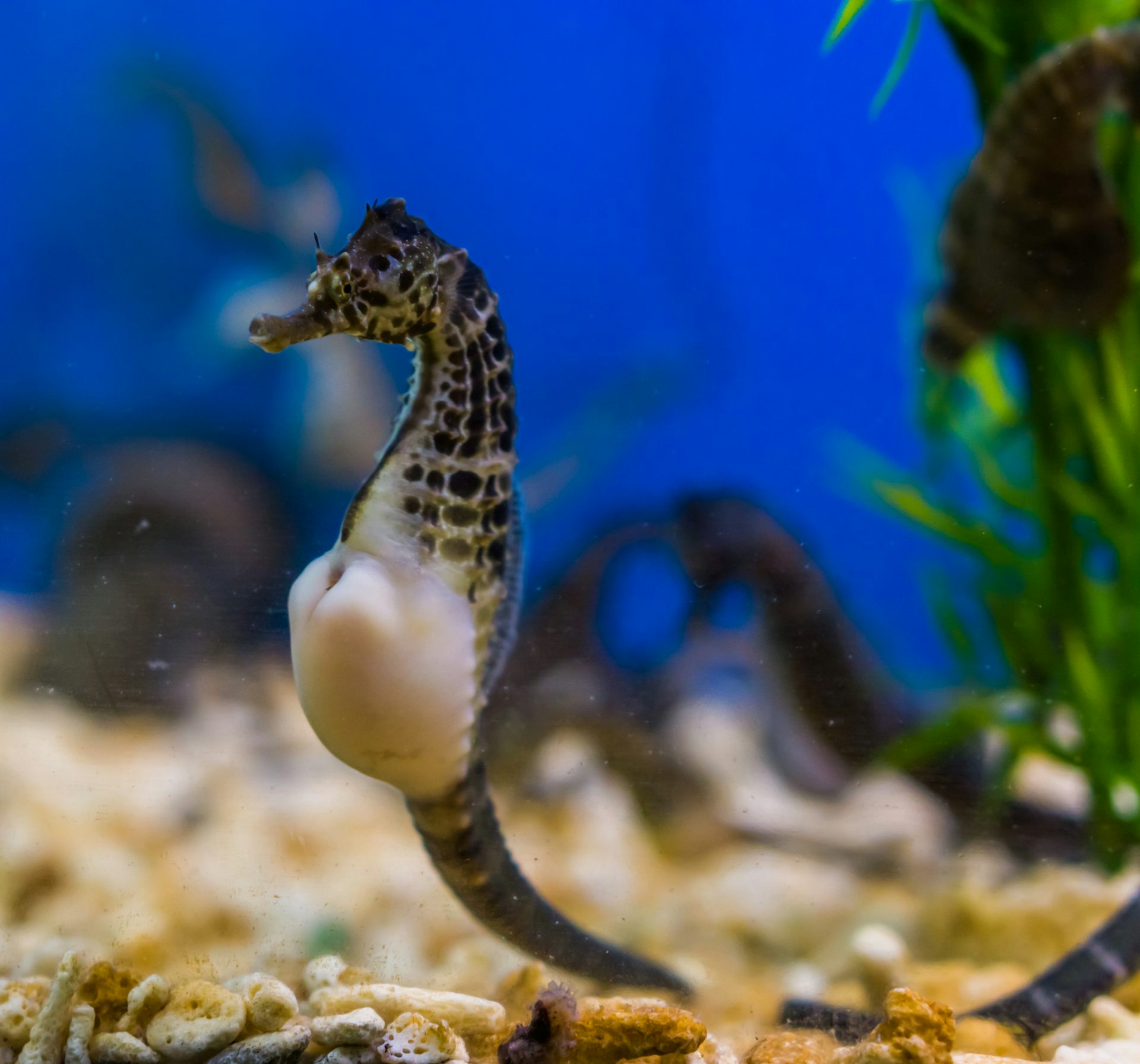
Male seahorses give birth, but they don’t do it the way female animals do.
Source:Shutterstock
Therefore, we predicted seahorse males would use oxytocin-family hormones to control the process of giving birth via contracting smooth muscles inside the brood pouch.
What we found
First, we exposed pieces of seahorse pouch to isotocin. While isotocin caused our control tissues (intestine) to contract, surprisingly this hormone produced no contractions in the brood pouch.
The result led us to wonder about the anatomy of the pouch. When we examined the pouch under a microscope, we found it contains only scattered small bundles of smooth muscle, far less than the uterus of female mammals. This explained why the pouch did not contract in our experiments.
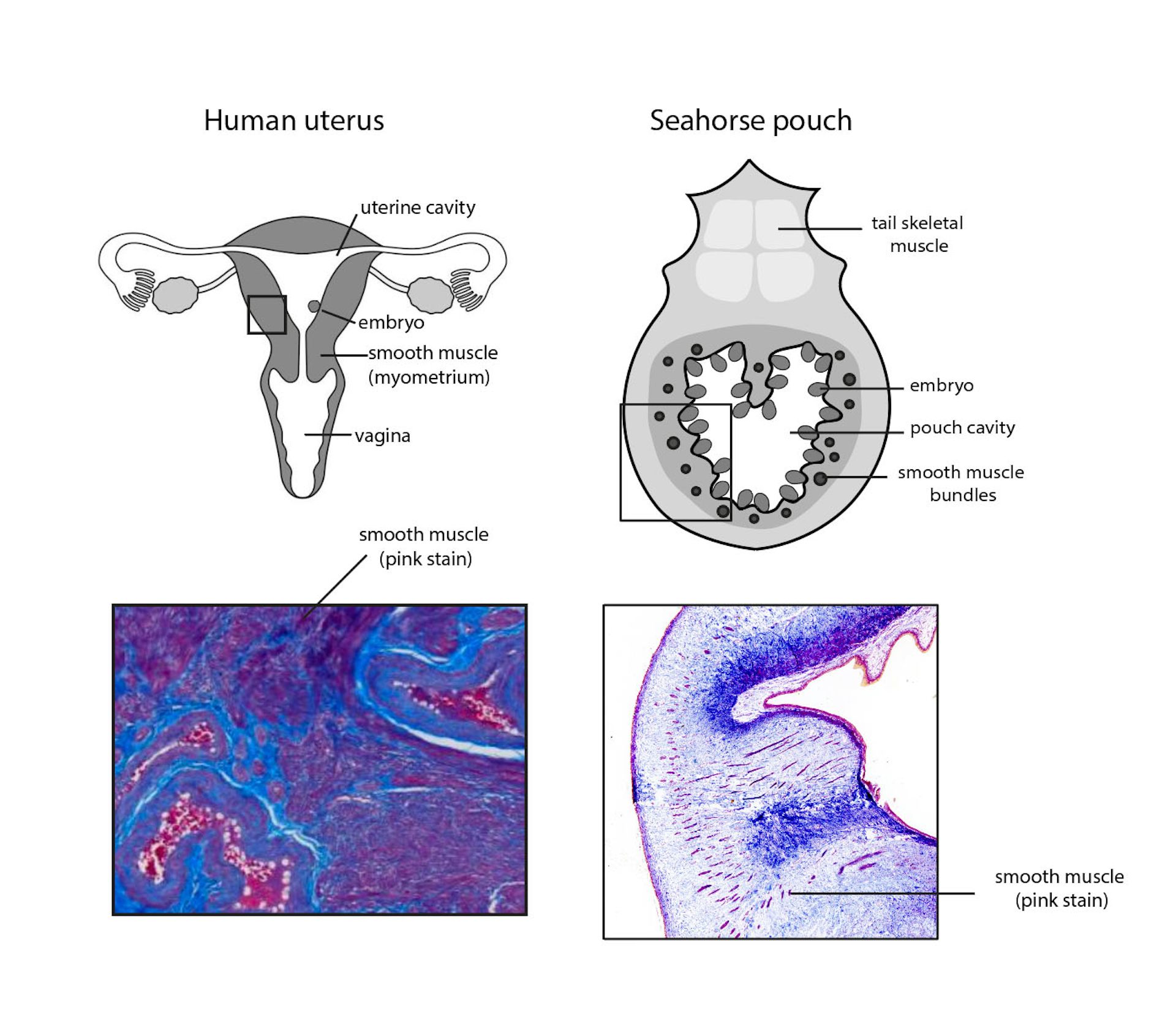
In the human uterus (left), the entire outer layer is comprised of smooth muscle. The seahorse pouch (right) only has small smooth muscle bundles scattered throughout the outer layers of the pouch.
Credit: Jessica Suzanne Dudley / VWR, Author provided
In males, we found three bones positioned near the pouch opening, associated with large skeletal muscles. These types of bones and muscles control the anal fin in other fish species. In seahorses, the anal fin is miniscule and has little or no function in swimming.
So, the large muscles associated with the tiny seahorse fin are surprising. The anal fin muscles and bones are much larger in male seahorses than in female seahorses, and their orientation suggests they could control the opening of the pouch.
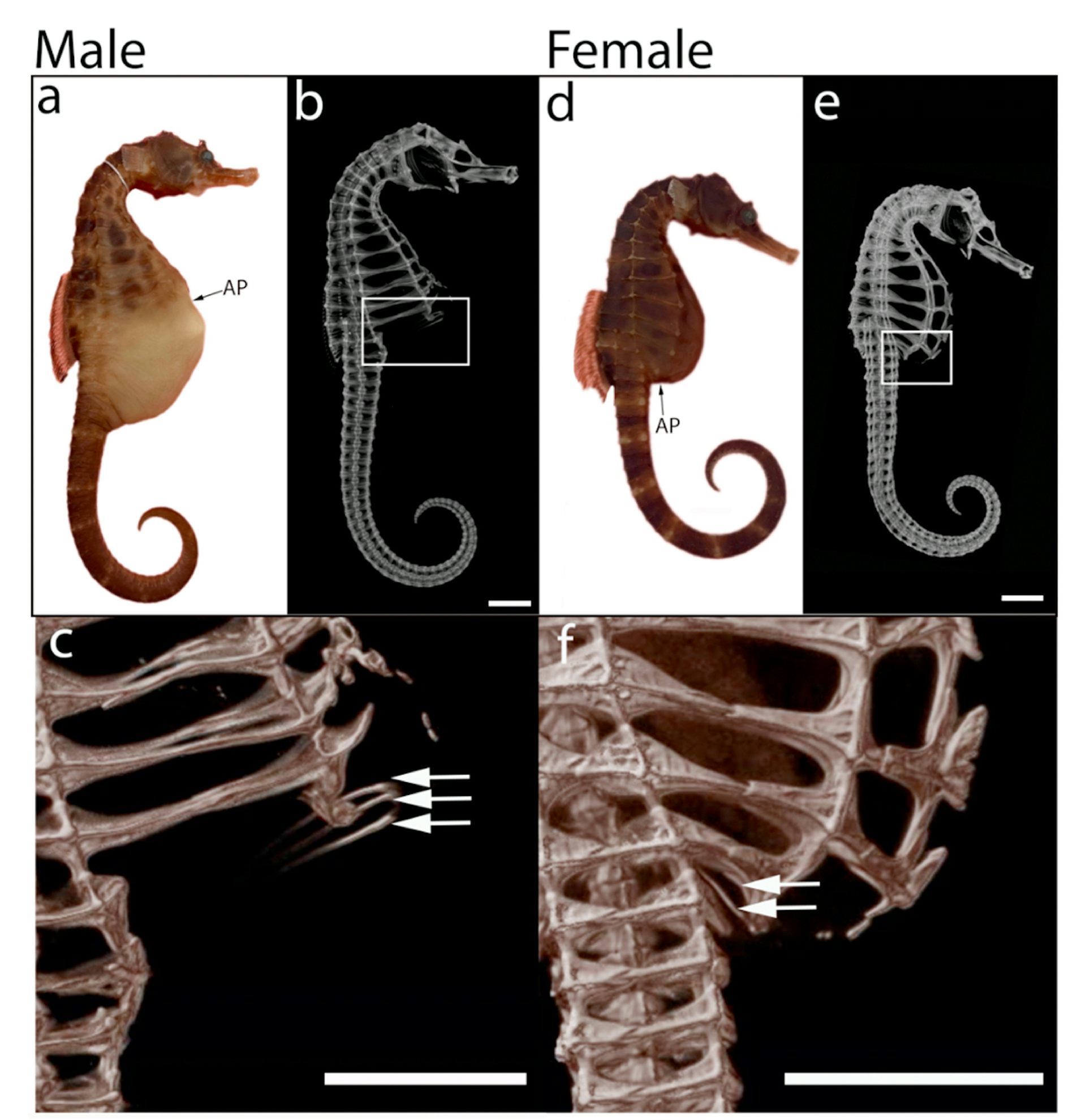
The skeleton of the male seahorse appears to be adapted for giving birth.
Credit: Jessica Suzanne Dudley, Author provided
Seahorse courtship is an elaborate process. Males open and fill their pouch with water by bending forward and contracting their bodies to force water into the pouch, before “dancing” with the female.
Similarly, during labour, male seahorses bend their body towards the tail, pressing and then relaxing. This “pressing” behaviour is accompanied by brief gaping of the pouch opening, with a series of whole-body jerks. This movement combined with pouch opening allows seawater to flush through the pouch.
Jerking and pressing continues, the pouch opening gets gradually bigger, and groups of seahorse babies are ejected with each movement. Many hundreds of babies are ejected in a short time.
A seahorse father undergoing labour.
Future biomechanical and electrophysiological studies are needed to examine the force required to contract these muscles and test whether they do control the opening of the pouch.
Different ways to solve a problem
Our unexpected results suggest male seahorses use different mechanisms to give birth compared to female pregnant animals.
We speculate that oxytocin-family hormones, instead of primarily producing smooth muscle contractions, trigger the cascade of seahorse behaviours that lead to birth.
Despite the similarities that male seahorses share with female mammals and reptiles during pregnancy, it seems seahorse fathers have a unique way of giving birth to their young.
Read more:
Pregnant male seahorses support up to 1,000 growing babies by forming a placenta
We see this time and again in nature where evolution has reinvented the wheel, so to speak. As I mentioned earlier, there are multiple designs of wing and different modes of powered flight in insects, birds and mammals. There are also many different versions of eyes. This is because there is no mechanism for consciously using something evolved in one branch of the tree of life in another, save only for the rare examples of horizontal gene transfer and then only in the simpler, mostly single-celled organisms.Abstract
Introduction
Syngnathids (seahorses, pipefishes and seadragons) are among the few vertebrates that display male pregnancy. During seahorse pregnancy, males incubate developing embryos embedded in a placenta within a fleshy brood pouch, before expelling fully developed neonates at parturition. The mechanisms underpinning seahorse parturition are poorly understood.
Methods
We examined the morphology of the brood pouch using microcomputed tomography and histological techniques, in combination with physiological assays, to examine how male pot-bellied seahorses (Hippocampus abdominalis) control labour. In female-pregnant vertebrates, nonapeptide hormones (such as vasopressin- and oxytocin-like hormones) produce contractions of gestational smooth muscle to produce labour.
Results
Histological analysis of the seahorse brood pouch reveals only scattered small smooth muscle bundles in the brood pouch, and in-vitro application of isotocin (a teleost nonapeptide hormone) to the brood pouch do not produce measurable muscle contractions. Micro-computed tomography shows differences in size and orientation of the anal fin assembly between male and female pot-bellied seahorses, and histological analysis reveals large skeletal muscle bundles attached to the anal fin bones at the male brood pouch opening.
Discussion
We conclude that seahorse parturition may be facilitated by contraction of these muscles, which, in combination with body movements, serves to gape open the pouch and expel the neonates. Future biomechanical studies are needed to test this hypothesis.
Dudley, J.S.; Paul, J.W.; Teh, V.; Mackenzie, T.E.; Butler, T.A.; Tolosa, J.M.; Smith, R.; Foley, M.; Dowland, S.; Thompson, M.B.; Whittington, C.M.
Seahorse brood pouch morphology and control of male parturition in Hippocampus abdominalis
Placenta 2022 vol 127, pp. 88-94, DOI: 10.1016/j.placenta.2022.07.015
© 2022 Elsevier Ltd.
Reprinted under the terms of the Copyright, Designs and Patents Act 1988, s60.
But surly, an intelligent designer worthy of the title, would use solutions it designed for one problem as a solution for the same problem when designing a new organism, wouldn't it? Like any decent computer programmer will use tried and tested subroutines to perform a particular task in a program, instead of writing new code to do the same thing. Not so, Creationism's putative designer it seems. This designer is forever forgetting what it designed earlier and having to reinvent a new solution to the problem is solved earlier, usually coming up with a different solution.
This is, of course, one way we can be sure that there was no designer, intelligent or otherwise involved in the process. The male seahorse's method of giving birth is very different from that of mammals and other viviparous fish, even though the problem is basically the same - how to push babies out of the brood pouch - because evolution had different starting point to build on, and the process was the entirely utilitarian one of whichever works better gets passed on to the next generation.
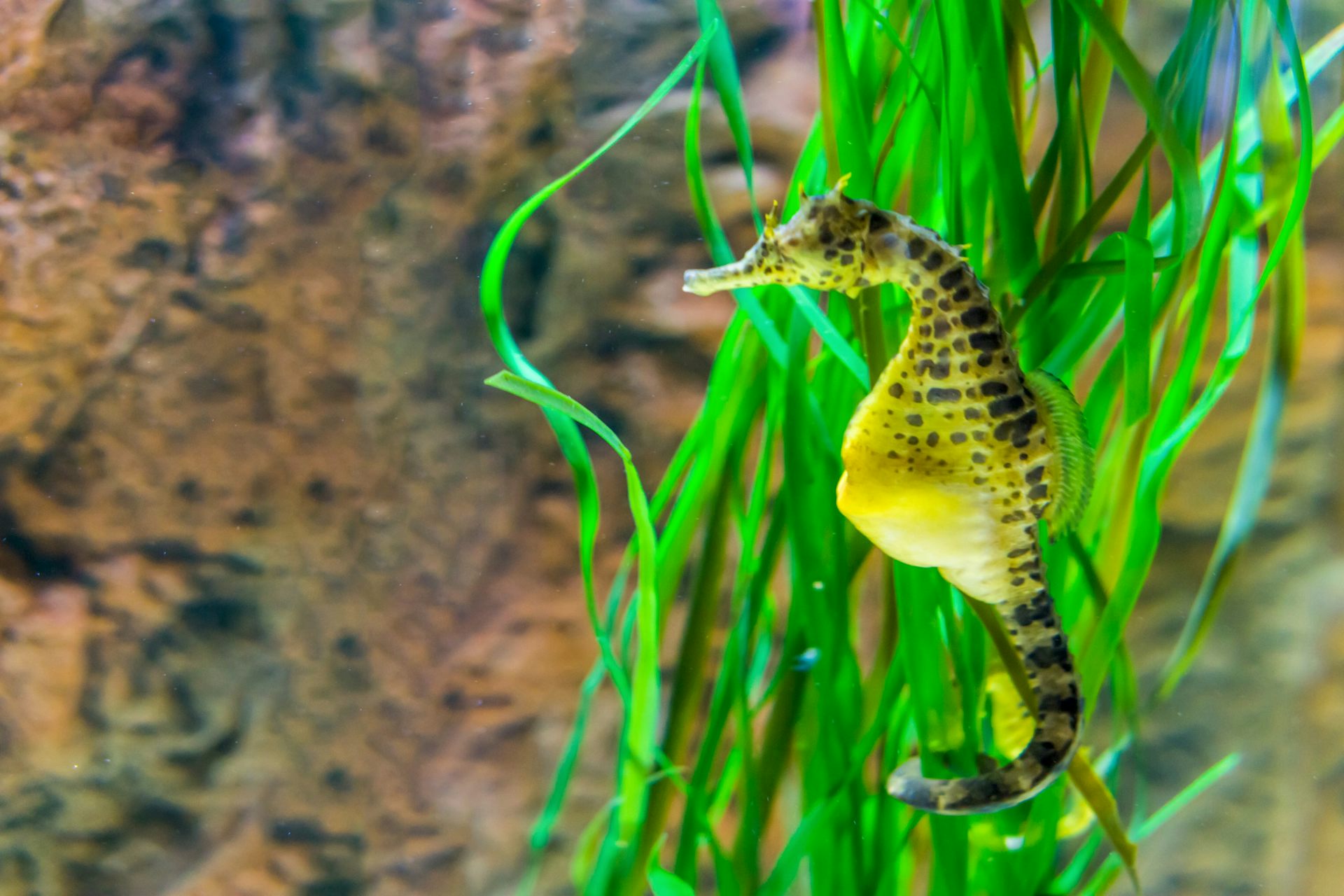

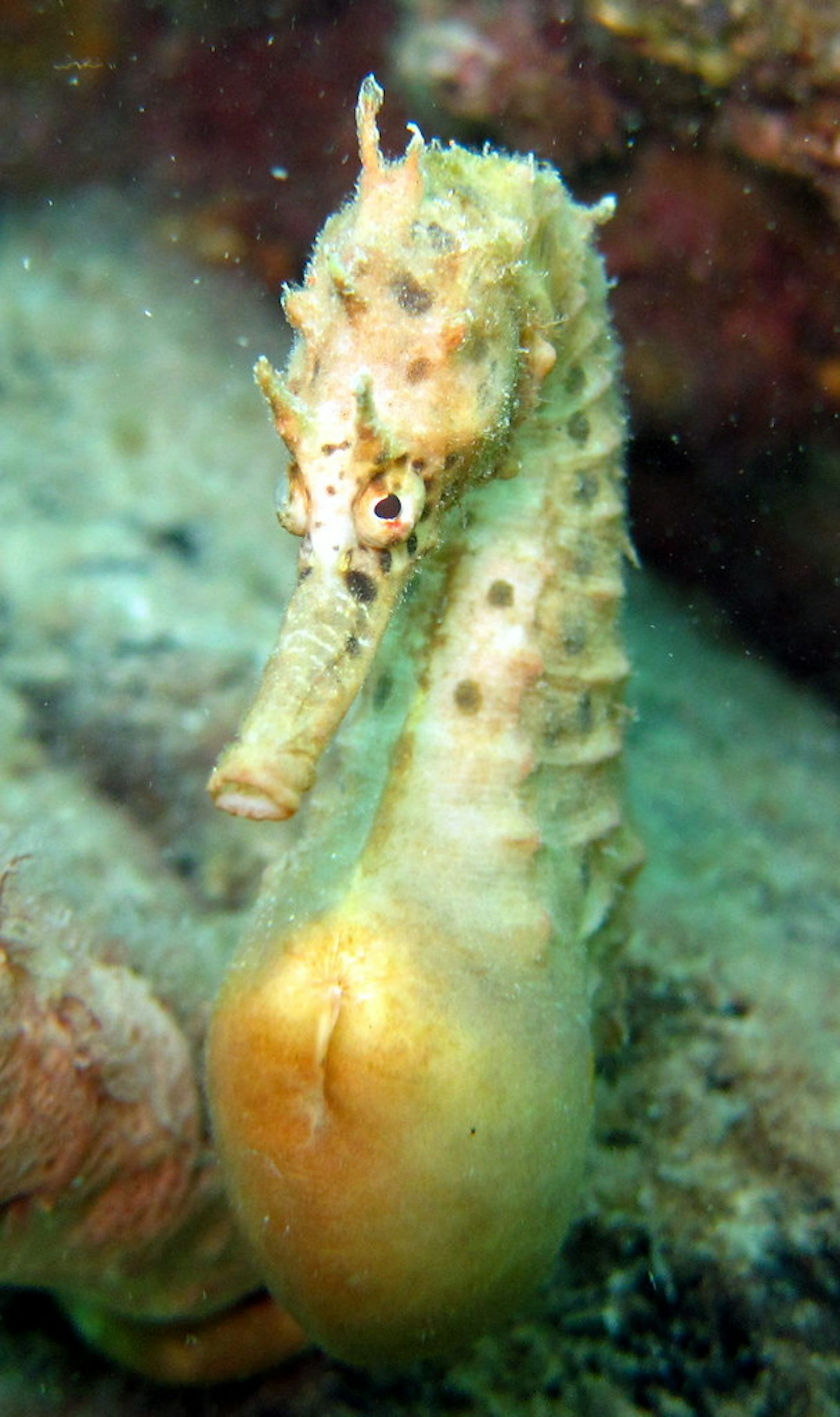


No comments :
Post a Comment
Obscene, threatening or obnoxious messages, preaching, abuse and spam will be removed, as will anything by known Internet trolls and stalkers, by known sock-puppet accounts and anything not connected with the post,
A claim made without evidence can be dismissed without evidence. Remember: your opinion is not an established fact unless corroborated.